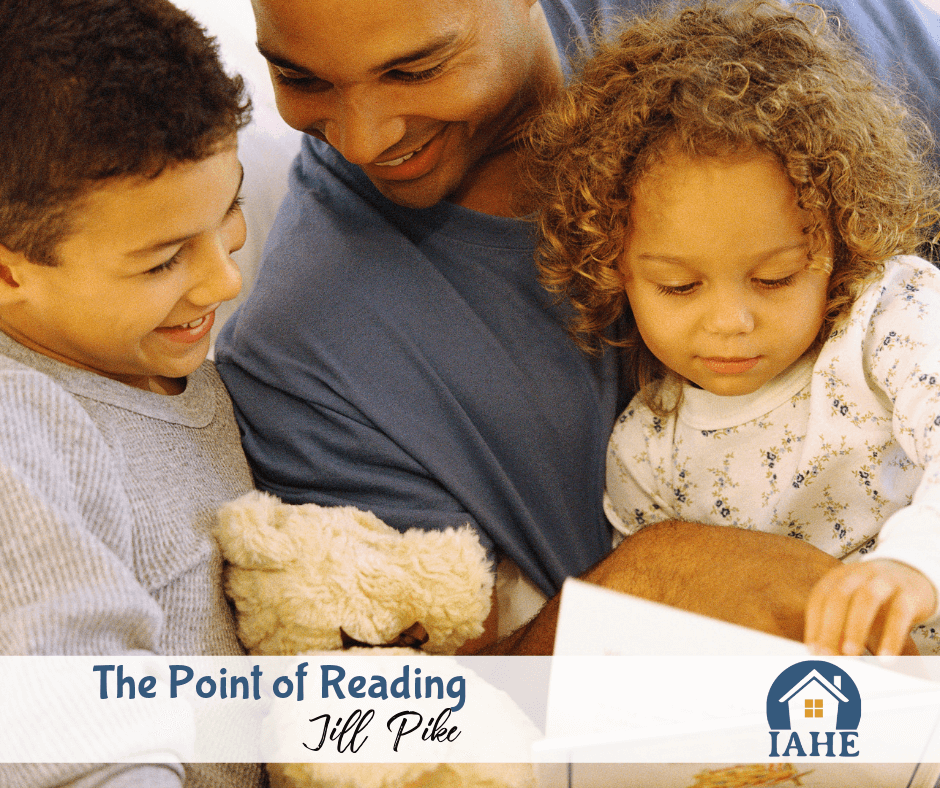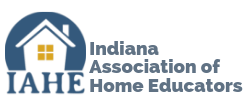
I have always loved books. When I was little, my dad delighted me with Mrs. Pigglewiggle stories at bedtime. At age nine, I discovered L’Engle’s Wrinkle in Time and saw the world in a whole new light. I discovered what Mortimer Adler declared: “A good book can teach you about the world and about yourself. You learn more than how to read better; you also learn more about life. You become wiser.” Yet is it enough to just read? To truly gain more from great literature, it helps to discuss it with a mentor. That means as parents and teachers, we have the privilege of delving into books with our students. But how does one lead a book discussion? Where does one start? It is as easy as asking questions.
Of course, that is the conundrum: What questions should we ask? Fortunately, all stories follow a similar pattern, and that pattern can be used to lead a discussion. The plot summary divides the story into three main parts: the exposition, the rising action or plot, and the climax and resolution. By asking questions in the context of these elements, the deeper issues presented in the story can be explored. Let’s explore these three story divisions and the questions that can be asked at each point.
The first part of the story is the exposition. This is where the questions “who, what, when, where” may be asked. Who is in the story? (Name the characters.) What are they like? What do they do? This begins the exploration of the heart of each character. When and where does the story happen? This helps determine if the story is based on real events, such as a historical novel, or if the tale is make-believe. If the novel is historical, talk about what else is happening at that time and find the places on a map—this will bring the story to life all the more. If it is a fantasy, discuss what that world is like and how it compares to our own.
The rising action begins with an inciting moment. Something happens that brings a problem into the story: a runty pig is born and adopted, a letter arrives, or siblings are whisked away to Narnia. As the plot thickens, there are conflicts or problems to resolve. The more complicated the book, the more conflicts to explore. It might be man against man, such as Beatrix Potter’s Peter Rabbit against Mr. McGregor. It might be man against nature, such as Brian’s need to survive when stranded in the forest in Paulsen’s Hatchet. It could also be man against society as in Lois Lowry’s The Giver. The question to ask is “What does the character need or want?” There are no right answers to this question, and that is what makes a book discussion so valuable. By exploring the possible conflicts, readers can learn from one another and discover things about the narrative that they had not considered before.
To determine where the main climax and resolution occurs in the book, it is helpful to turn the conflict into a question: Will Peter get out of the garden? Will Brian be rescued? Will Jonas save Gabriel? The climax occurs when that question is answered. You may find that each story has several minor conflicts that are resolved along the way, but the central conflict is either the last one to be solved or the one that once settled allows the reader to relax and enjoy the rest of the story. Since it can be debatable where the central climax occurs, great discussions ensue. After a book talk, I have sometimes come away with more than one possible climax for a book—that is fine! There are no right answers when it comes to book discussions. As long as students can support their claim, their choice may stand. Simply agree to disagree.
As the resolutions are explored, the theme of the story can be teased out. Is the story of Peter Rabbit about courage or gluttony? As Brian contends with his coming of age, what is he learning? And what is Jonas learning about what constitutes a good life? Notice that this is not the first question we ask. The understanding of theme is one of the last things to explore, and it comes out naturally once the other elements of the story have been made clear. When discussing the theme, having a list of possibilities to choose from will help. You can find great lists by searching the internet for “literature theme.” Moreover, you will discover that the more books you discuss, the better you will be able to discuss the next one. Practice develops the ability, so start with a short story and go!
Mortimer Adler proposed that “A good book can teach you about the world and about yourself. You learn more than how to read better; you also learn more about life. You become wiser.” Although this can happen to a degree during casual reading, it often does not. Adler goes on to say, “All genuine learning is active, not passive. It involves the use of the mind, not just the memory. It is a process of discovery, in which the student is the main agent, not the teacher.” In this way, the teacher is not giving a lecture. Instead, the teacher is guiding, asking questions, inviting the student to do the digging and exploring. The benefit lies in the journey—the finding of answers coupled with offering proof from the story to support a claim. This is the point of reading.
For more detailed instruction into how to lead book discussions in this manner, check out Adam Andrew’s Teaching the Classics.
Jill Pike is a homeschooling mother of eight and an IEW® Accomplished Instructor. She has authored many lesson plans offered by the Institute for Excellence in Writing, including IEW’s popular reading and writing program, Primary Arts of Language. After graduating seven children, Jill and her husband, Greg, continue to home educate their youngest in Indiana.
